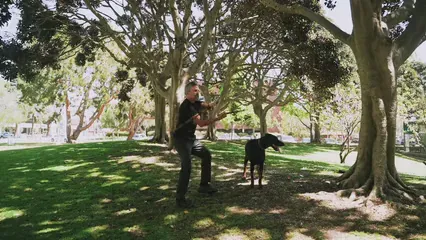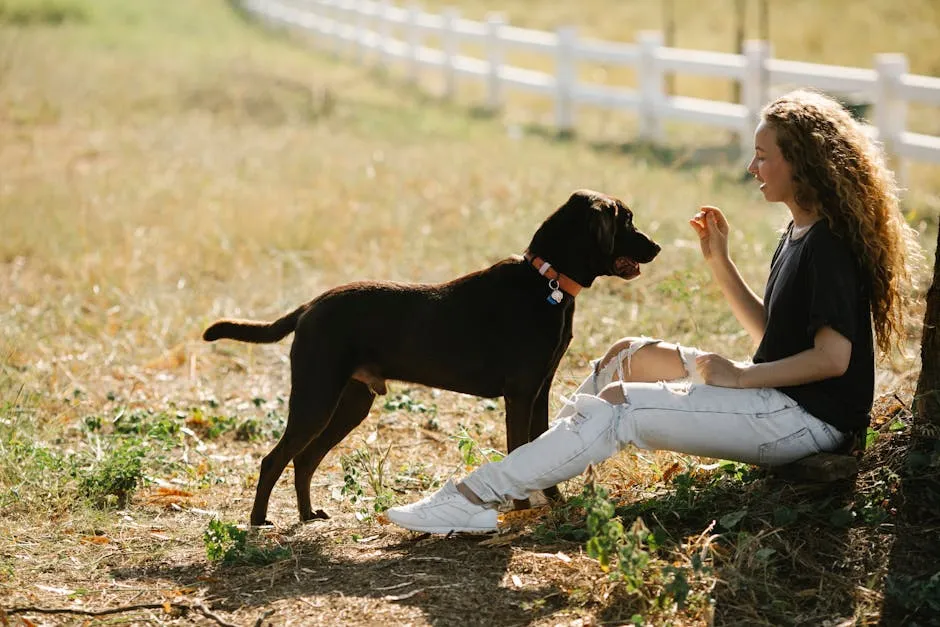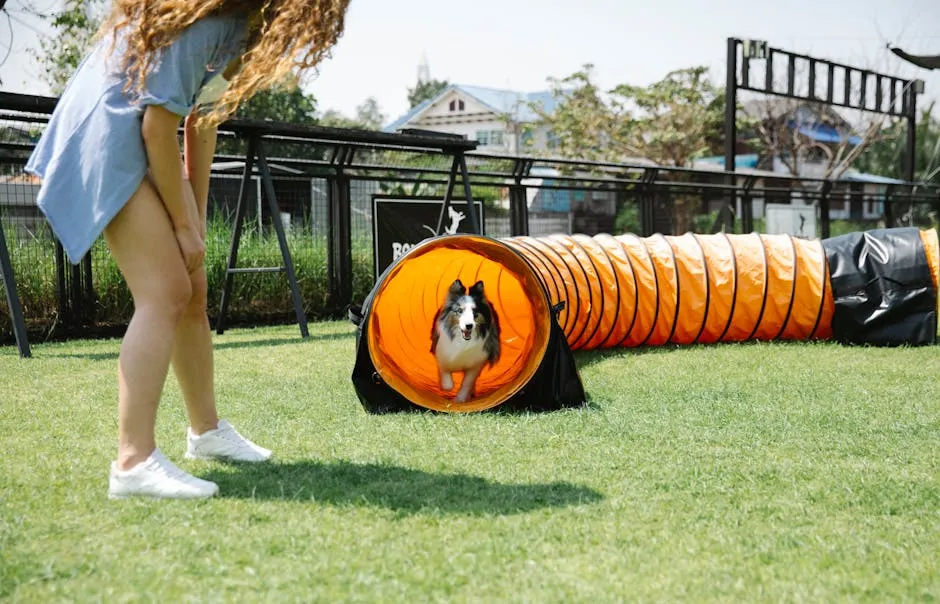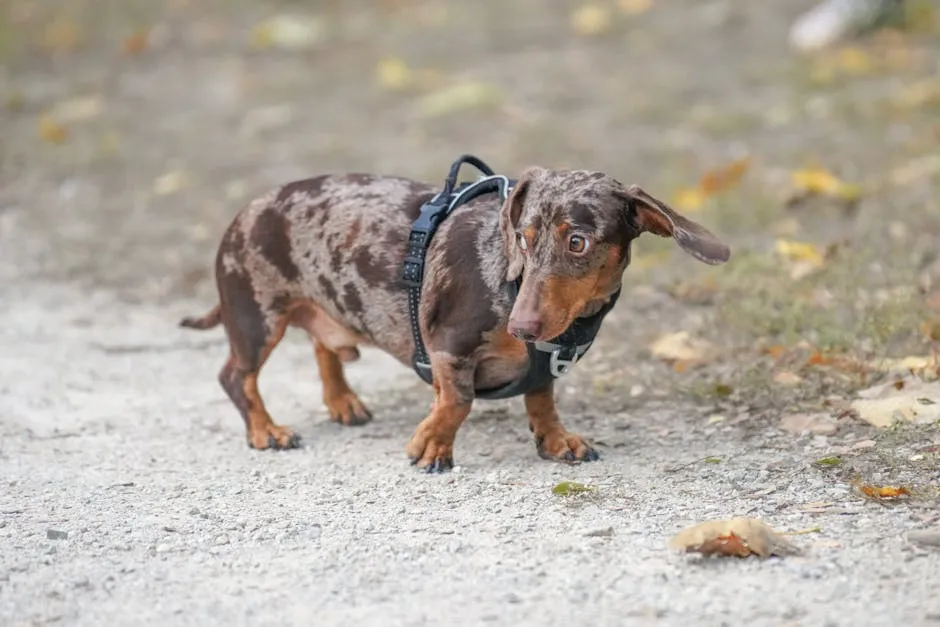Introduction
Training your dog is essential for a happy life together. A structured routine can help you achieve amazing results. In 2024, new tools and methods can enhance your training experience. Let’s explore how a consistent routine can make a difference for you and your furry friend.
Summary and Overview
A dog training routine is a plan that outlines when and how you train your dog. It is significant because it builds good habits and reinforces learning. In this article, you’ll learn about creating consistency, integrating training into daily life, and adjusting to changes. A well-structured routine can lead to better obedience and a stronger bond with your dog.
Understanding the Basics of Dog Training
Importance of Consistency in Training
Consistency is vital for effective dog training. When you consistently use commands and training techniques, your dog learns faster. Dogs thrive on routine; it helps them understand what you expect. Inconsistent training can confuse your dog and slow their progress. Studies show that up to 80% of dogs benefit from consistent training practices. This means your efforts are likely to yield positive results if you maintain a steady approach. So, reflect on your current training methods. Are you consistent?

To help you maintain that consistency, consider using a Dog Training Clicker. This handy tool makes it easier to mark desired behaviors and helps reinforce learning in a fun way. Your dog will quickly associate the sound with good behavior, speeding up their training process!
Key Dog Training Principles
Positive Reinforcement Techniques
Positive reinforcement is a powerful tool in dog training. This method involves rewarding your dog for good behavior. Rewards can include treats, praise, or toys. The key is to give these rewards immediately after your dog performs the desired action. Research shows that dogs trained with positive reinforcement are more likely to repeat good behavior. It creates a fun and engaging atmosphere for learning. Consider keeping a log of the rewards you use. It will help you track what motivates your dog best.
Speaking of rewards, why not make training even more enticing with some delicious Dog Training Treats? These tasty morsels can turn any training session into a rewarding experience for your pup, ensuring they stay motivated and eager to learn!
For more on how to effectively use positive reinforcement in your training, check out this guide on effective positive reinforcement techniques for stubborn dogs.
The Role of Repetition and Practice
Repetition is vital for dog training success. It helps your dog build muscle memory, allowing them to respond instinctively to commands. The more you practice, the better your dog learns. Daily practice can solidify these skills over time.
Aim for two to three short sessions each day. Research suggests that practicing for 5-10 minutes per session yields the best results. Short, frequent sessions prevent your dog from losing focus. They also make the training experience more enjoyable for both of you.
When structuring your practice, focus on one or two commands at a time. This approach keeps sessions manageable and helps your dog fully grasp each command. Always end on a positive note, rewarding your dog for their efforts.
To set a training schedule, consider your dog’s energy levels and your availability. Consistency will lead to better results. So, why not create a training plan today? Your dog will thank you for it!

Choosing the Right Training Environment
Minimizing Distractions
The training environment plays a crucial role in your dog’s learning. Dogs can easily become distracted by noises, smells, or movements around them. Studies show that nearly 70% of dogs struggle to focus in busy environments. To improve training effectiveness, choose a quiet space with minimal distractions.
Pick locations like your living room, a quiet backyard, or a secluded park. This helps your dog remain engaged and focused on your commands. Ensure the area is free from other pets or loud noises.
To create a conducive training space, gather all necessary supplies beforehand. Use treats, toys, and a leash to keep your dog’s attention. Keep sessions short and positive, ending on a high note to reinforce good behavior.
Speaking of leashes, a quality Dog Leash can be a game changer during training walks. It gives you better control over your dog, ensuring they stay focused on you rather than the distractions around them!

Integrating Training into Daily Life
Making Training Part of Routine Activities
Incorporating training into your daily activities can yield fantastic results. You don’t need to set aside large blocks of time for training. Instead, use everyday moments to teach your dog essential commands.
For example, during walks, practice commands like “heel” or “sit.” Before feeding your dog, have them wait or perform a trick. During playtime, ask for commands before throwing their favorite toy. This multitasking approach keeps your dog engaged and reinforces learning.
Research indicates that integrating training into daily life increases retention of commands by up to 50%. So, look for opportunities throughout your day. Identify specific activities where you can add training.
By blending training with routine tasks, you make learning enjoyable and effective. Your dog will appreciate the extra attention, and you’ll both benefit from a stronger bond.

Adapting Training to Life Changes
Flexibility in Training Routine
Life changes can significantly impact your dog’s training routine. Whether it’s a new job, moving to a new home, or welcoming a new family member, these shifts may disrupt your established routine. However, adapting your training approach is crucial for continued success.
To maintain consistency, consider setting flexible training times that fit your new schedule. Short sessions can be effective, allowing you to train without feeling overwhelmed. Research shows that 60% of dog owners struggle to keep up with training during transitions. By adjusting your routine, you can mitigate this issue.
Incorporate training into everyday activities. For instance, practice commands during meal prep or while on walks. This not only reinforces training but also strengthens your bond with your dog. Regularly revisit your training plan, ensuring it aligns with your current circumstances.
Speaking of strengthening bonds, consider getting a Dog Harness. It’s perfect for walks and training, giving you more control and comfort while keeping your furry friend safe!

Conclusion
In summary, having a well-structured dog training routine is vital for effective results. Consistency, adaptability, and positive reinforcement are crucial elements in your training journey. As we move into 2024, implement the strategies discussed to enhance your dog’s learning and behavior. Start today, and watch your efforts lead to better training outcomes!
FAQs
What is the best time to train my dog?
The best time for dog training depends on your dog’s routine. Mornings are often ideal when your dog is fresh. Training right before meals can also be effective. They tend to focus more when they’re hungry. Find a consistent training schedule that works for both of you. This routine helps your dog know when to expect training.
How often should I train my dog?
The frequency of dog training is crucial. Aim for two to three training sessions per week. Each session should last about 5-10 minutes, which keeps your dog engaged. Shorter, more frequent sessions yield better results than long, infrequent ones. Consistency is key for reinforcing learned behaviors. Over time, your dog will improve and retain skills better with regular practice.
Can I train my dog at home, or should I hire a professional?
You can absolutely train your dog at home! Many owners successfully use resources like online tutorials and books. However, hiring a professional dog trainer can offer personalized guidance. They can help address specific behavioral issues or teach advanced skills. If you feel overwhelmed or unsure, consider seeking professional help to ensure effective training.
What are some common mistakes in dog training?
Many dog owners make several common mistakes. One frequent error is inconsistency in commands or rules. This confusion can hinder your dog’s learning process. Another mistake is using negative reinforcement, which can damage trust. Also, failing to end sessions on a positive note can discourage your dog. Avoid these pitfalls by staying consistent and focusing on positive reinforcement techniques.
How can I motivate my dog during training?
Dog training motivation is essential for success. Positive reinforcement techniques work wonders. Use treats, praise, or playtime as rewards for good behavior. Timing is crucial; reward immediately after your dog performs the desired action. Keep training sessions fun and engaging, using a happy tone and body language. This approach will encourage your dog to participate and learn happily.
Please let us know what you think about our content by leaving a comment down below!
Thank you for reading till here 🙂
And if you’re looking for some great interactive fun for your pup, check out this Interactive Dog Toys. They’re perfect for keeping your dog mentally stimulated and entertained!
Lastly, don’t forget to pamper your dog with a comfy Dog Bed. A good night’s sleep is essential for their overall well-being!
All images from Pexels





